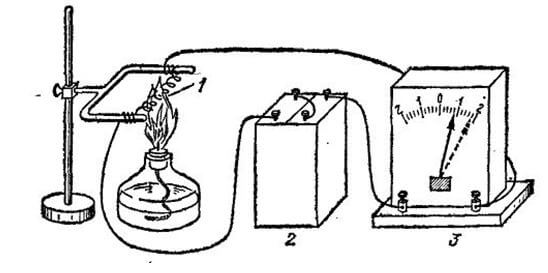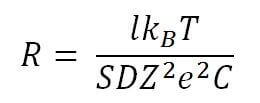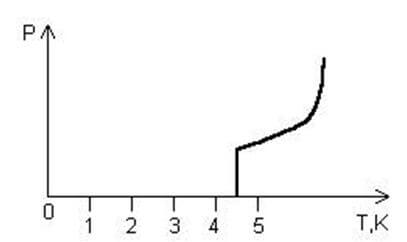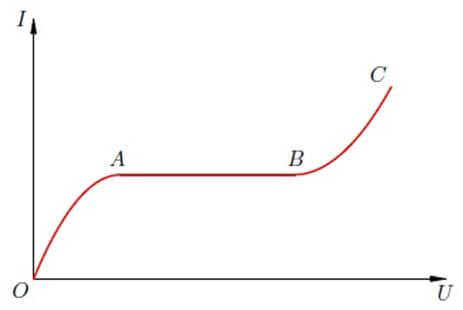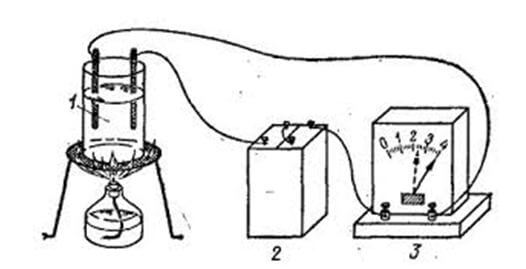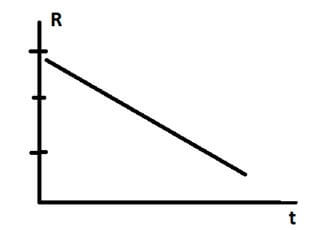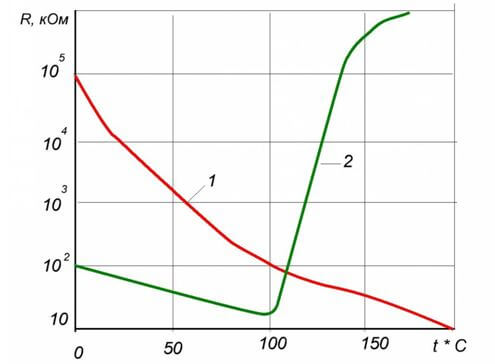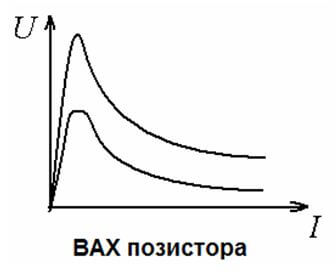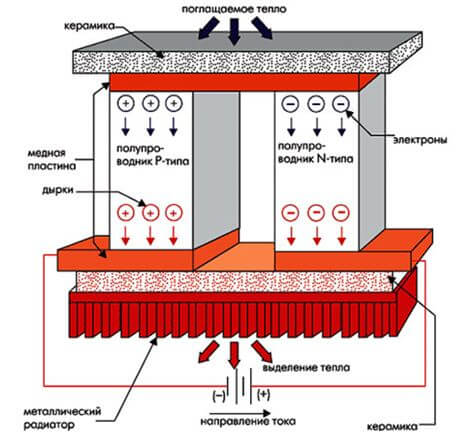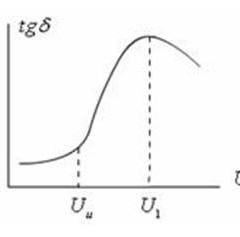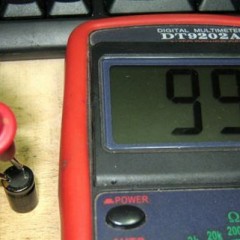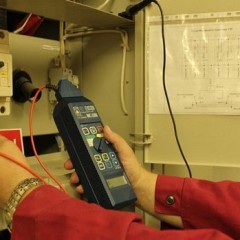How does the resistance of a conductor depend on temperature?
Metals
How does temperature affect metals? To find out this dependence, an experiment was carried out: a battery, an ammeter, a wire and a torch are connected together using wires. Then you need to measure the current in the circuit. After the readings have been taken, you need to bring the burner to the wire and heat it. When the wire is heated, it is seen that the resistance increases, and the conductivity of the metal decreases.
Where:
- Metal wire
- Battery
- Ammeter
Dependence is indicated and justified by the formulas:
From these formulas it follows that R of the conductor is determined by the formula:
An example of the dependence of metal resistance on temperature is provided in the video:
It is also necessary to pay attention to such a property as superconductivity. If environmental conditions are normal, then when cooled, the conductors reduce their resistance. The graph below shows how temperature and resistivity in mercury depend.
Superconductivity is a phenomenon that occurs when a material reaches a critical temperature (Kelvin closer to zero), at which the resistance decreases sharply to zero.
Gases
Gases play the role of a dielectric and cannot conduct an electric current. And in order for it to form, charge carriers are needed. Ions act in their role, and they arise due to the influence of external factors.
Dependence can be considered as an example. For the experiment, the same design is used as in the previous experiment, only the conductors are replaced with metal plates. There should be a small space between them. The ammeter should indicate a lack of current. When placing the burner between the plates, the device will indicate the current that passes through the gas medium.
Below is a graph of the current-voltage characteristic of a gas discharge, where it is seen that the increase in ionization at the initial stage increases, then the dependence of the current on voltage remains unchanged (that is, when the voltage increases, the current remains the same) and a sharp increase in current, which leads to breakdown of the dielectric layer .
Consider the conductivity of gases in practice. The passage of electric current in gases is used in fluorescent lamps and lamps. In this case, the cathode and anode, two electrodes are placed in a flask, in which there is an inert gas. How does this phenomenon depend on gas? When the lamp turns on, two filaments are heated, and thermionic emission is created.Inside the bulb is coated with a phosphor that emits the light that we see. How does mercury depend on the phosphor? Mercury vapors, when bombarded with electrons, form infrared radiation, which in turn emits light.
If voltage is applied between the cathode and the anode, gas conductivity occurs.
Liquids
Current conductors in liquids are anions and cations that move due to an external electric field. Electrons provide negligible conductivity. Consider the dependence of resistance on temperature in liquids.
Where:
- Electrolyte
- Battery
- Ammeter
The dependence of the effect of electrolytes on heating is prescribed by the formula:
Where a is the negative temperature coefficient.
How R depends on heating (t) is shown in the graph below:
This relationship should be considered when charging batteries and batteries.
Semiconductors
And how does resistance depend on heating in semiconductors? First, let's talk about thermistors. These are devices that change their electrical resistance under the influence of heat. This semiconductor has a temperature coefficient of resistance (TCS) an order of magnitude higher than metals. Both positive and negative conductors, they have certain characteristics.
Where: 1 - this is TCS less than zero; 2 - TCS is greater than zero.
In order for such conductors as thermistors to start working, take any point on the I-V characteristic as a basis:
- if the temperature of the element is less than zero, then such conductors are used as a relay;
- to control the changing current, as well as what temperature and voltage, use a linear section.
Thermistors are used when checking and measuring electromagnetic radiation, which is carried out at ultra-high frequencies. Due to this, these conductors are used in systems such as fire alarms, heat verification and control of the use of bulk media and liquids. Those thermistors in which the TCS is less than zero are used in cooling systems.
Now about the thermocouples. How does the Seebeck phenomenon affect thermocouples? The dependence is that such conductors operate on the basis of this phenomenon. When the temperature of the junction increases with heating, an EMF appears at the junction of the closed circuit. Thus, their dependence is manifested and thermal energy is converted into electricity. To fully understand the process, I recommend that you study our instructions on how tohow to make a thermoelectric generator yourself.
Such a device is called a thermocouple. Thermocouples are used as low-power current sources, as well as for measuring temperatures of a digital computing device, in which the dimensions should be small and the readings accurate.
More details about semiconductors, and the effect of heating on their resistance is described in the video:
Well, the last thing I would like to talk about is refrigerators and semiconductor heaters. Semiconductor junctions provide a temperature difference of up to sixty degrees in the design. Thanks to this, a refrigerating cabinet was designed. The cooling temperature in such a chamber reaches - 16 degrees. The basis of the operation of the elements is the use of thermocouples through which electric current passes.
So we examined the dependence of the resistance of the conductor on temperature. We hope that the information provided was understandable and useful for you!
Surely you do not know:

